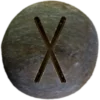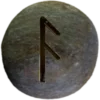Last Updated on December 23, 2024


Skothendingar (pronounced SKOHT-hen-din-gar) is a form of internal rhyme essential to traditional Norse skaldic poetry. It requires matching consonants while vowels differ slightly. This style adds complexity and musicality to the poem, challenging the poet’s skill. The term derives from Old Norse, meaning “slanted rhymes,” contrasting with aðalhendingar (perfect rhymes).
In dróttkvætt (court meter), skothendingar occurs in odd-numbered lines. The rhyme must fall on stressed syllables, creating a precise rhythm and sound. The even-numbered lines follow aðalhendingar, balancing the structure. This strict adherence to form elevated skaldic poetry, distinguishing it from other poetic traditions.
For example, Egill Skallagrímsson, a renowned skald, used skothendingar in Egils saga. In one stanza, consonants like “d” and “t” create slanted rhymes:
“Deyfð þó at drykkju deyjur,
tók svanr í val tóku.”
(Though dulled by drink, I perish,
A swan took my fate, they took.)
This technique demonstrates how skothendingar amplify the emotional impact of the poem. Other examples can be found in Hákonarmál and Eiríksmál, which honor Norse leaders. Both use intricate skothendingar, showcasing the poets’ artistry.
The Prose Edda, attributed to Snorri Sturluson, discusses skothendingar as part of its instruction on skaldic verse. Skalds learned these techniques to compose poems celebrating heroic deeds, mythology, and history ![]() . Memorizing these forms required significant dedication, passing this tradition orally through generations.
. Memorizing these forms required significant dedication, passing this tradition orally through generations.
Elder Futhark Runes Associated with Skothendingar
The Ansuz rune (ᚨ, pronounced AHN-sooz) aligns with skothendingar through its connection to communication, wisdom, and poetic inspiration. Skalds often invoked divine insight. ![]()
The Gebō rune (ᚷ, pronounced GHE-boh) represents the exchange of gifts, including poetic skill. This rune symbolizes the creative relationship between skalds and their patrons.
Importance to Asatruar
For Asatruar, these rhyme reflects the value of preserving culture through artistry. This form showcases the intricacies of Norse oral traditions. Poetry crafted with skothendingar connects Asatruar to the voices of their ancestors. It celebrates creativity, language, and the enduring power of storytelling. By studying this technique, modern practitioners honor the skalds’ legacy and gain insight into Norse cultural identity. The precision and beauty of skothendingar inspire Asatruar to approach their traditions with respect and reverence.
